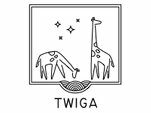Currently, only around 58% of Africans have access to safe drinking water. More than 90% of African freshwater is contained within 63 internationally shared basins. The current freshwater distribution in Africa is expected to change rapidly due to climatic- and socio-economic drivers (IPCC, 2014).
In order to guarantee access to freshwater for drinking water or irrigation, agreements on the distribution and quality of freshwater resources are important. Catchment management is usually the responsibility of a governmental organization such as a Catchment Management Agency in South Africa. However, catchment boundaries are usually not always situated within a political region (Figure 1). For example, river systems such as the Crocodile River catchment in Southern Africa is shared by three countries (Eswatini, South Africa, and Mozambique).

Figure 1 Overview of freshwater basins in Africa 
Figure 2 Overview of the water controlroom in the TWIGA portal.
Within TWIGA we are building a water control-room service. In this service, we are connecting/gathering data from several different organizations that are responsible for water management in the Inkomati river basin. The goal of this service is to have the best available weather and water information available for all relevant decision-makers in the whole catchment. For the Inkomati basin, we have connected weather data from the South African Weather Service, water data is coming from all relevant catchment management agencies (such as the Department of Water Affairs in eSwatini and the Inkomati Ushutu Catchmenent Management agency in South-Africa).
With the data connected to the TWIGA platform, we can use the TWIGA portal as an easy and intuitive user interface for all stakeholders. The monitoring of several key parameters, such as the minimum flow rate, or water quality measurements can be visualized in the portal. In the visualization, we have chosen to use traffic light colors. Every measurement location can be colored red or green, where green means the data is meeting international agreements, whereas red signals that an agreement is not met.
All stakeholders from various organizations and countries only need to log in to the TWIGA portal, and they are directly presented with all the relevant data to monitor the current state in the whole basin (Figure 2). When locations turn amber or red because regulations are not met, it is immediately clear to all stakeholders (Figure 3). The TWIGA Portal makes the monitoring of compliance on transboundary agreements easier.

Figure 3 A graph in the water controlroom showing the flow rote (black line) compared to the international agreements.
Without access or sharing of data, each country/organization might have a different approach to events occurring within (their respective parts of) the catchment. Often a country will make decisions based on its own interest, without sufficiently weighing the interests of other countries sharing the same catchment. Through the International Water Control Room, we provide a scalable solution to the need for consistent data provision and the ability to share data between relevant stakeholders. This TWIGA service aims to improve the decision-making processes such that the right decisions in water management are made, improving water and food security in Africa.
RELATED TWIGA SERVICE: INTERNATIONAL WATER CONTROL ROOM
Written by: Marcel Alderlieste and Glenn Morvan
Hydrologic.

